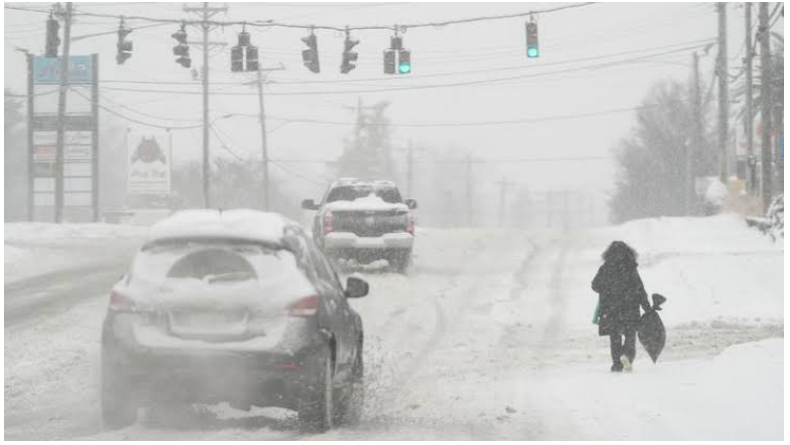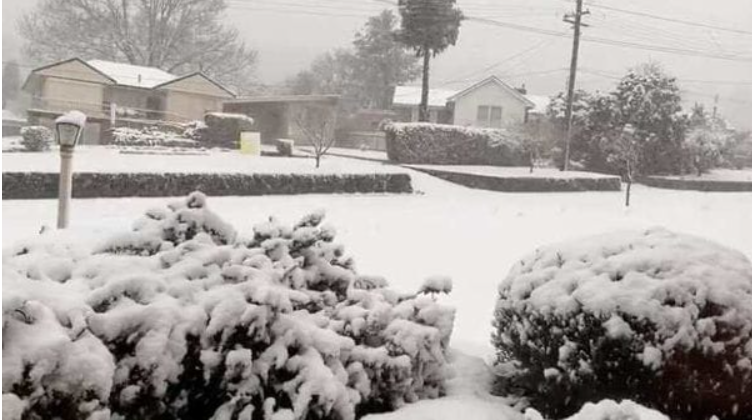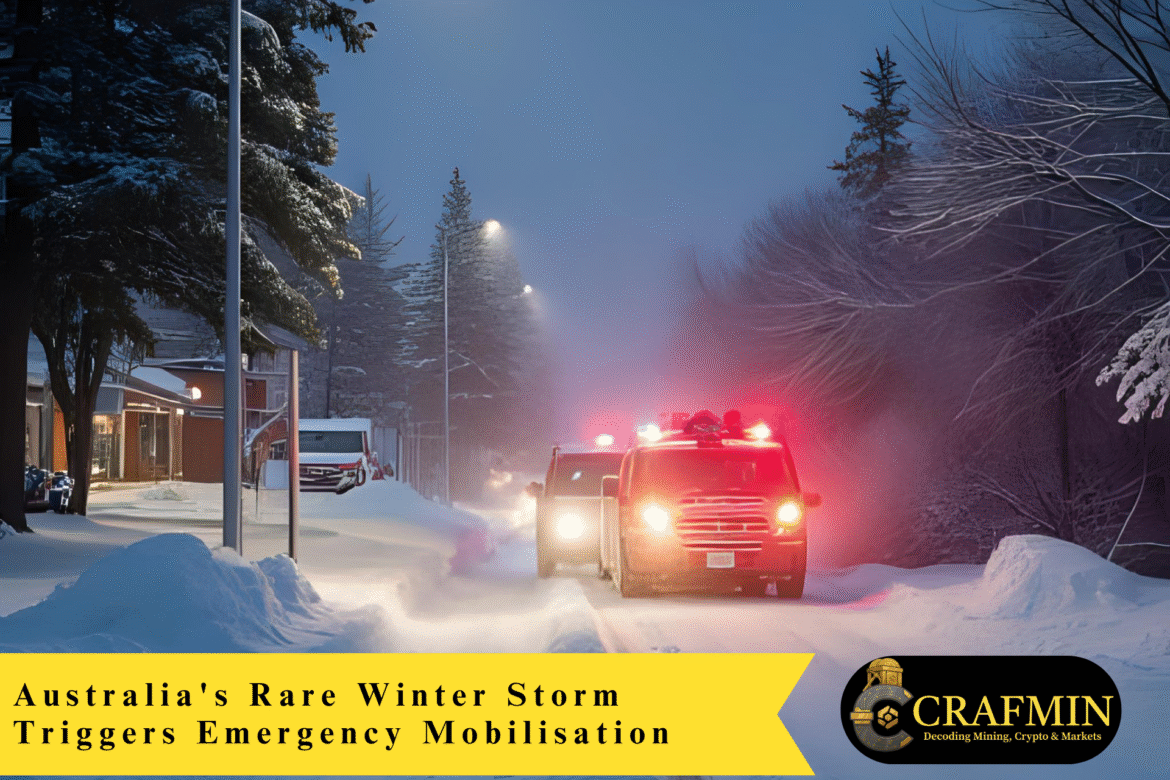
Over the weekend, eastern Australia saw some of the region’s most atypical weather ever. A strong cold front that began the process soon developed into deep snowfall in northern New South Wales and southern Queensland—dramatic disturbance, flash flooding, mass power outage and one fatality reported. For many communities, it was the deepest snow in generations.
Upfront Facts
- Snow depths were as much as 40 cm in towns such as Guyra, Armidale and the surrounding area, the largest snowfall since the mid‑1980s.
- Queensland experienced its first snowfall in perhaps 10 years, with dustings about the Granite Belt.
- Emergency services recorded 1,455-plus calls, including over 100 stranded cars.
- Rainfall of up to 130 mm led to flash flooding about northern NSW.
More than 27,000 homes went dark, rescue crews were sent around the state, and authorities began searches for a woman who was swept away in floodwaters.
A Landscape Unlike Anything Locals Remember

Image: REUTERS
Cold winds blew in from the Great Dividing Range, cascading moisture into sub-freezing temperatures. What ensued was a winter wonderland-like phenomenon—rolling hills and grasslands that minutes beforehand looked like harsh European winter landscapes. Farmers told of ice-locked fences, stranded livestock and bewildered animals caught in surprise freeze.
In Guyra, the elevations above 1,300 metres witnessed the snow fall over homes, vehicles and trees. Local Sharon Conley described it as being like the picture on a Christmas postcard. Others referred to the snowfall as “unreal,” with the massive diameter of snowflakes dusting towns.
Emergencies Mount as Weather Twirls
The State Emergency Service was finding it difficult to cope with the level of disruption. SES crews were removing stranded motorists, responding to incidents at creek crossings that had been flooded, and responding to roof collapses and fallen power poles.
One of the tragic incidents occurred when a woman in her 20s was washed out of a flooded vehicle near Cessnock. The driver was rescued, but the missing passenger remains unaccounted for. The SES is still searching.
Black ice formed on main alpine roads, despite the clearing of snow. The SES warned even thin white coverings of dust might hide slippery patches and send vehicles off track—on well-known routes too.
Communities Brought Together Against Their Will
It was common in much of the affected area to have snow little more than a memory. This year, residents and visitors battled icy winds and slippery hills, sharing stories of slogging through drifts and impromptu snowball fights.
Hotels and caravan parks around Stanthorpe and Warwick booked out as rural townsfolk and weekenders hunted for scenes of snowfall. A local hosting family even shut down their enterprise mid-afternoon to go drive themselves to Guyra—just so their children could have a proper scene of snow without needing to leave Australia.
Meanwhile, farmers attempted to get around frozen weather, despite cold and safety hazards. Rugby matches creepy resumed under gray skies, children bundled in scarves on sideline benches, as bulk grain trucks creep on slippery ground.
Climate Questions Rise as Winter Patterns Shift
Scientists say this isn’t technically new—although it’s not typical for snow of such magnitude to reach this far north and last this long. Although there were record snowfalls in isolated cases in New England regions previously, this kind of broad-level dump of 40 cm is essentially unheard of outside the alpine regions.
Meteorologists called this trend consistent with altered climate patterns—cold air impacting strong low-pressure systems, forming unstable weather oscillations between snow, rain, and hail in rapid succession. Longer-term data show more fluctuation in late-winter storms.
Here’s What Happens Next
- Councils’ damage assessment crews and rescue teams are evaluating road closures, erosion zones and fallen powerlines.
- Flood-impact crews are watching Peel and Namoi rivers for rising levels and stress on levees and bridges.
- Insurance claims are taking flood claims for car damage, roofing repairs and livestock losses in a flood surge and are going to keep going.
- Recovery assistance: Emergency shelters and medical response units are ready, especially for isolated communities cut off by snow or flood.
Why Everyone Wants to Know
This event is noteworthy because it is an extreme shock to communities expecting summer heat. To communities that usually expect bushfires or dryness, this was climatic uncertainty in lived experience: flood, snow, ice—all in one weekend, in tropical latitudes.
It also highlighted regional preparedness deficits: rural infrastructure was not designed to resist frost, high-altitude weather forecasting remains a difficulty, and emergency buildings had to adapt quickly with changing ground conditions.
Voices from the Tablelands
A bus driver who took a wrong turn reported six hours on the Highway spoke of squalls of snow and rising irritation among travelers. Locals shared photos of sheep grazing in half-frozen paddocks; others laughed at viral clips of a man snowboarding along Guyra’s golf course fairway.
But under the awe lay empathy: volunteers delivered blankets, tea and hot food to waiting families for roads to clear. An organiser explained that the snowfall “brought people together—not because of respite—but because we all looked for warmth from each other.”
Final Word: A Winter Wake-Up Call
During the weekend, east Australia stepped into a wintry shock that not many of its residents had previously ever seen. Northern NSW towns and parts of Queensland saw snow accumulate in a swift manner, flash floods stretch, and vital infrastructure crumble with complexity.
For the majority, the message is not about snow—resiliency. The region united when the weather became bizarre. The numbers responding, from SES volunteers to acts of neighborliness, are a testament to how communities act when nature does not go by the book.
And when the weather steadies and floodwaters recede, this rare snow will be a marker: a reminder that even mid-year, in the subtropics, Australia can surprise—and demand a new kind of preparation.

